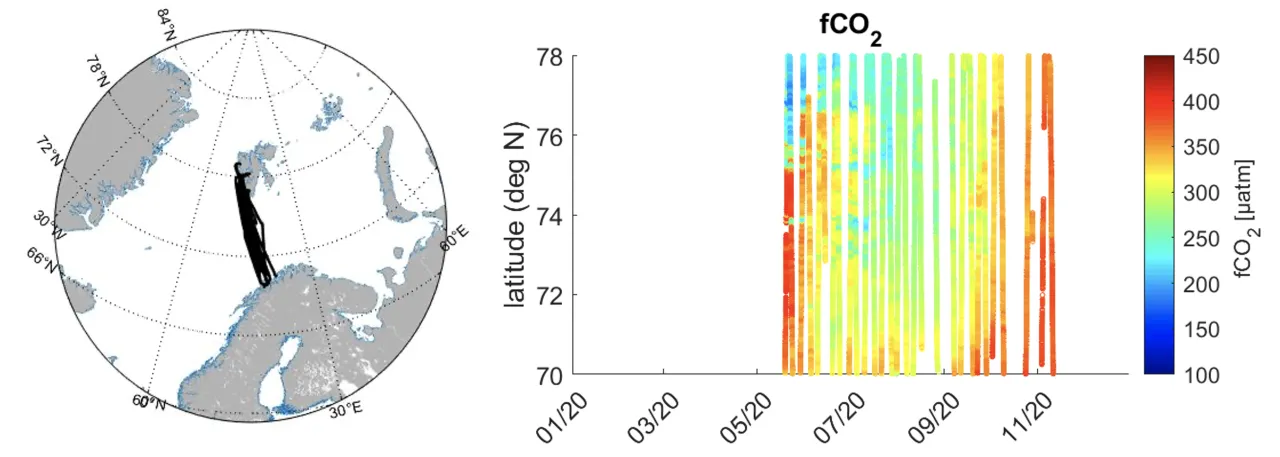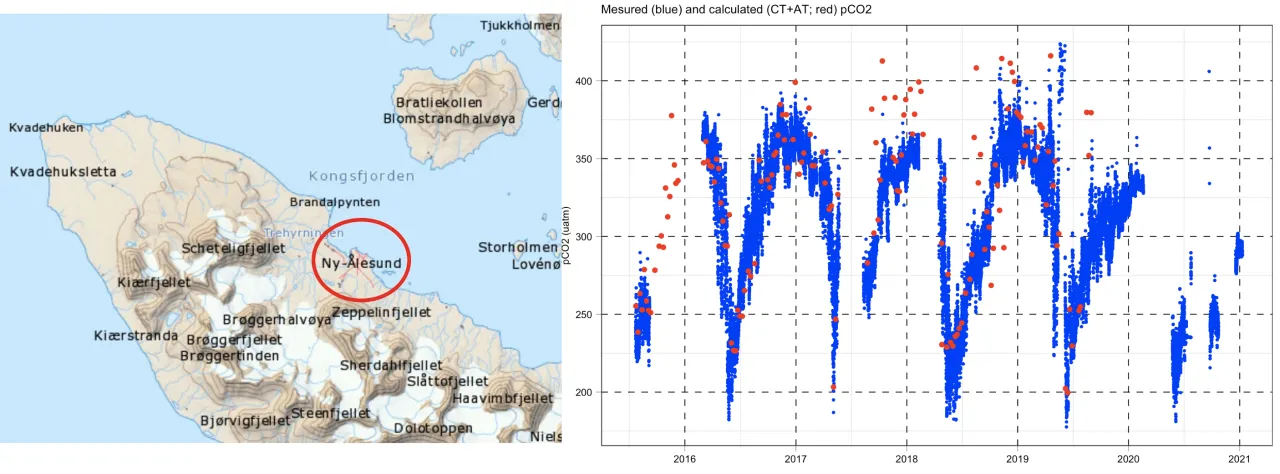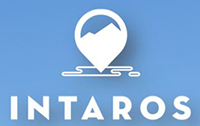Challenges: The main challenges in the Arctic are to get autonomous biogeochemical sensor to work for a longer time and collect data from different locations. The goal is to collect data that can be used to address processes like CO2-uptake and storage, deoxygenation, ocean acidification and biological changes. In INTAROS biogeochemistry is defined as the inorganic carbon cycle variables, nutrients, oxygen and related physical biological data. The inorganic carbon system data are normally stored in the SOCAT (https://www.socat.info/) and GLODAP (https://www.glodap.info) databases.
Results from INTAROS: From bottom-anchored moorings deployed under ice the goal was to collect data from the SAMI instrument for one year. But due to several problems only about four months of good data was obtained. In the AWIPEW observatory in Kongsfjorden biogeochemical data have been collected successfully for several years, but the observations stopped in January 2021 because tha pandemic prevented personnel to maintain the system. AWIPEW is the only Iobservatory providing high-resolution measurments of CO2 in Arcic sea water with transmission of data to users in near-realtime. Biogeocehnicla data ar ealøso collected at the Hausgarten observatory in the Fram Strait and from cruises in the west Greenland coast. In Baffin Bay a series of Bio-ARGO floats have been used to collect physial and biogeochemical data, contributing to the global Argo programme. Sections of data are also colleted from the ferrbox operating between Tromsø and Svabard.

Left: Map of the sailing route of M/S Norbjørn operating the NIVA ferrybox between Tromsø and Svabard. Right: Time series of fCO2 measurments along the sailing route for the period June - Novemebr 2020.

Right: Map of Kongsfjorden in Svalbard and where the AWIPEW obsevatory is located in Ny-Ålesund. Right: Time series of pCO2 data from 2015 to 2021, where blue shows measurements and red calcuated estimates.


